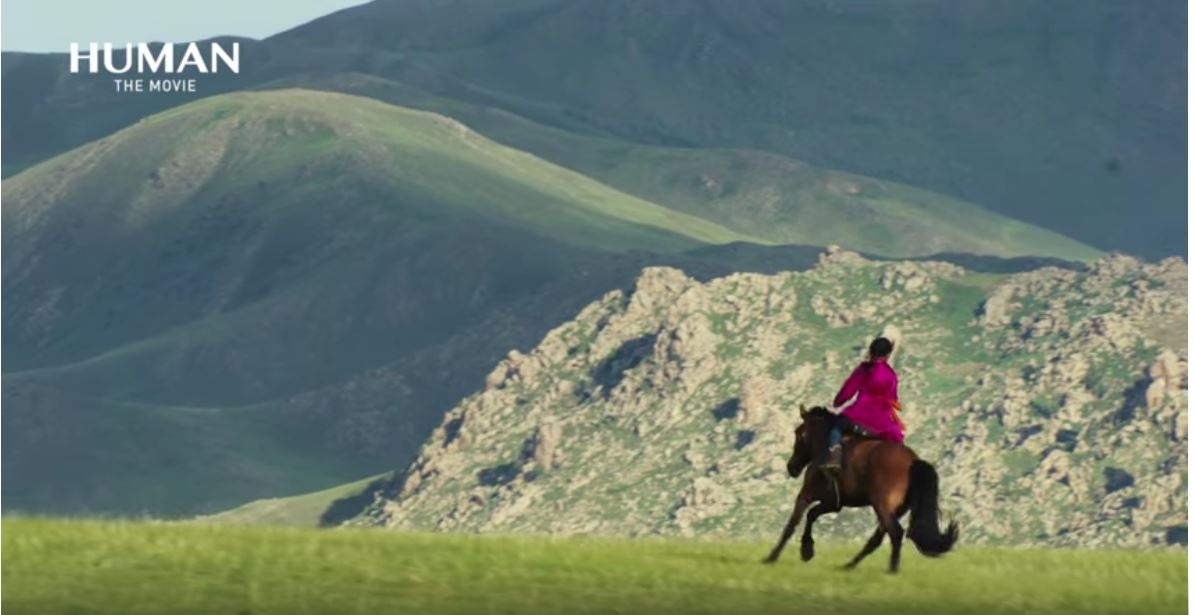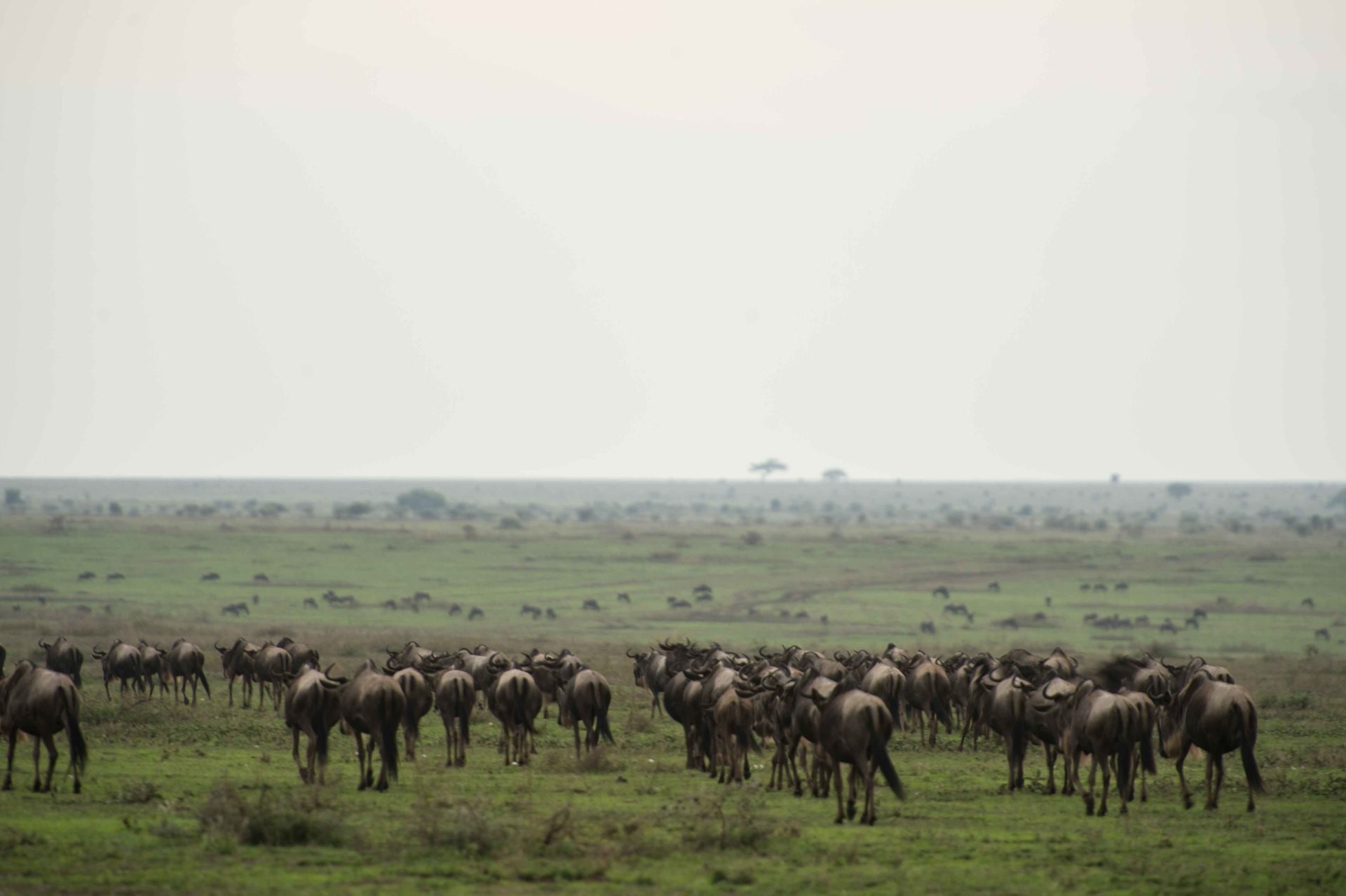You can’t tell the London Missionary Society or the Royal Geographical Society that you are wondering around Africa because you are starry-eyed about the place. Nor can you tell your long-suffering wife the same thing. To get the money, you have to package it up as a noble pursuit - a pursuit of exploration, missionary work and the ending the slave trade. It seemed to work - Livingstone became a national hero and was eventually buried in Westminster Abbey.
Burton, Speke and Stanley also went on quests to find the source of the Nile and had their own rip-roaring adventures while they were about it. These adventures then turned into expeditions which turned into a body of geographical knowledge which then got packaged up into a geography syllabus. I wonder if it is perhaps time to bring back the element of adventure to the syllabus. Read on and then leave your comments below. >>>

African Elephants
I was sitting this morning, in the dawn, sipping on my tea and watching a video on a matter non geographical. Okay, it had a slight connection – it was about creating courses which has some relevance to producing material for Rock and Sky. It is always fascinating listening to interesting people, not only from the information you get from them, but how that stimulates your own thinking and creativity. Which got me thinking about this geography syllabus that we have been lumbered with, or inherited, or perhaps blessed with. I am not sure which is the most appropriate, but let us not go there. The question I asked myself, why did some topics get into the syllabus and why some things didn’t?
Where does one draw the line between geography, the humanities, science, maths, surveying, climatology, physics, and so on? The late great E.O. Wilson wrote a book called Consilience where he tried to pull together the arts and the sciences, which seem to be on an ever-divergent trajectory. But I don’t want to go there either.

The Asian Steppes
So getting to the point. I wrote a blog post about the wild steppes of Asia, and how we had to learn about this amazing place when we were in the 9th grade. But it all seemed so dull and boring back then. Then about 25 years ago the BBC produced a series called Storm From the East, which was about the Mongols and their invasion of Europe. Of course the Mongols grew up on the Asian steppes. More recently I was blown away by a movie called Human in which there was some amazing footage of Mongolian kids galloping their horses across the central Asian steppes - which as the camera zoomed out, seemed to stretch to beyond the ends of the Earth. These grasslands are cut by meandering, anastomising rivers which in themselves were incredibly beautiful.
I also remember some years ago standing beside a pool on which floated a replica of an ocean-going Polynesian canoe. This pool and its canoe was in a museum in New Zealand. I was aware of how Polynesian seafarers had crossed wide oceans in open canoes, bringing with them everything they needed to set up life in a new world, and indeed, as Polynesians, the Maoris had made the ocean passage to New Zealand. As I looked at that canoe, I suddenly had a strong desire to find out all I could about the Polynesian migrations across the Pacific.

The Kon Tiki Expedition - 3 months at sea on a balsa-wood raft. What an adventure.
Warming to my theme, as a teen I had read the book The Kon Tiki Expedition by Thor Heyerdahl, who along with his crew had built a balsa wood raft and sailed it across the Pacific back in 1947 to test a theory that Polynesia may have been populated by people from South America. I have no doubt that Thor Heyerdahl’s imagination had been fired up by some kind of romantic experience that he had had in Polynesia, which drove him in his study of the islands and their inhabitants.
In similar vein, David Livingstone wandered for years through Africa. Supposedly to end the slave trade, to bring Christianity to the continent, and to explore trade routes. For most of this time he left his family at home, although his wife, Mary Moffat Livingstone, did accompany him on some of his adventures, although at great cost, eventually succumbing to malaria on the mouth of the Zambezi River in Mozambique.

A mosquito doing what mosquitoes do best.
So the question is, what drove the man? And why did he essentially abandon his wife and children to go on adventures into hostile regions rife with malaria? There could be a myriad of answers. However I would like to venture one. Anyone who has spent time in Africa will know the grandeur of the landscapes, the blueness of the sky, the impetuous skittering dust devils, the smell of the rain on the red earth, and the lion's roar. There is something in the bite of a mosquito other than malaria that once injected into your blood stream, drugs you and makes you forever wish to be in Africa.
And David Livingstone certainly had more than his fair share of mosquito bites. But you can’t go home and tell the London Missionary Society or the Royal Geographical Society that you are wondering around Africa because you are starry-eyed about the place. Nor can you tell your long-suffering wife the same thing. To get the money to keep the show on the road, you have to package it up as a noble pursuit - a pursuit of exploration, missionary work and the ending of the slave trade. It seemed to work - Livingstone became a national hero and was eventually buried in Westminster Abbey. Burton and Speke also went on quests to find the source of the Nile and had their own rip-roaring adventures while they were about it.

The Serengeti - a fine example of African Savannah Image courtesy of Completely Unique Safaris
But the point is this – the experience of African savannas, those sun-burnished deserts, those tumbling cataracts, those belching volcanoes, those precipitous rift valleys, must have burned themselves deep into the psyche of every explorer and wanderer who came that way. Sometime later, some conscientious people began to pull all of this information together. Perhaps it was those wonderful people of the Royal Geographical Society. And out of that flowed books, maps, journals and accounts of these expeditions.
Others then headed out to explore, measure, map and document these wild places. And some bright spark felt that that there was a need for the kids to learn about these things too, and so they got incorporated into a school syllabus. But by that stage it had morphed into something else – a text book of dull diagrams and endless facts. The romance and the passion writ large in the stories of Heyerdahl and Livingstone, whose imaginations and passions had been fired up by the landscapes and oceans that they encountered on their travels had somehow been lost in the telling.

The High Himalayas
My two examples are just to illustrate my point. There were many other explorers and adventurers who were also wooed by the places they travelled through.
So reverting back to my earlier question as to who somethings made it into the syllabus and somethings didn't, perhaps it was because they fired up the imaginations of those who first ventured into those regions.
So why do we learn about fold mountains? Is it not because they are magnificent? The high peaks and deep valleys were the redoubt of wolves and trolls. Or so the legends go . European culture has ebbed and flowed through those valleys for thousands of years. Similarly the Himalayas – the Abode of Snow – have the highest mountains on Earth and have been the birthplace of cultures and religions whose influence plays out still on the world stage.
Why do we learn about the African savannah? Is it not because they are magnificent? Those grasslands stretch to the edge of the world, where the base of the distant, towering cumulo-nimbus clouds are concealed below the bluish grey smudge that marks the distant horizon? And there, on those vast, green, well-watered plains, run free the vast herds wildebeest, impala and zebra.

Mt Bromo in the foreground and Mt Semeru in the distance. A surface manifestation of plate tectonics
Why do we learn about volcanoes? It is not because they are magnificent? The belch of Mt Semeru and ongoing exhalations of Mt Bromo hint at deeper disturbances in the Earth’s crust. Eruptions are spectacular and devastating for those caught up in those incandescent ash clouds and molten lava. Now we know that they are none other than surface manifestations of the downward plunge of tectonic plates in subduction zones. And in the latter case, this is not to take away from the amazing mechanism that drives subduction and the associated volcanism and seismic activity.
I like to think that we studied geography and the earth sciences because our curiosity had been piqued. Someone had lit the spark of curiosity in us. And now we have a responsibility to ensure that we light the spark for those who follow and tell the tales of adventure, of exploration, and of the magnificent landscapes and regions that makes up the planet that we call home.
PS. Please leave your comments in the comment section below.
Sign up to stay informed when we launch new courses or haul you along on wonderful adventures.
A promise - no spam, no nonsense, no passing on of your details
If this resonates with you and you think it may be valuable to others, please share.

